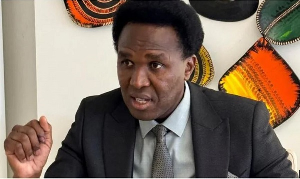The appeal by the Oti Regional Director of Ghana Health Service (GHS), Dr Osei Kuffour Afreh, to the government to provide the region with a medical store to help improve health care delivery is an important one.
The explanation that the existence of a medical store in the region would help avoid the situation where the regional health directorate officials have to travel a long distance to Ho, the Volta Regional capital, for medical commodities is tenable.
If medical commodities include pharmaceuticals, consumable medical supplies, and durable medical equipment, then it means that sometimes the public health facilities in the region would not readily have available some items needed for emergency treatment or quality healthcare.
The Oti Region and five other regions, namely Ahafo, Brong East, Western North, North East, and Savanna, are six new regions created in the country in December 2018.
One important reason for creating new regions in a country is to bring administrative zones and their running closer to people in the affected areas.
In other words, newly-created regions are expected to enjoy some independence and ease regarding their development; and ready use of certain amenities or facilities.
Thus, when the Oti Region, for instance, was carved out of the Volta Region, the expectation was that everything necessary to make the new region independent of the mother region was going to be provided.
And even if this was not going to happen in the near future, it was expected to a large extent that the new region would have a healthcare base that could take care of its people except in the cases of referrals, which are a normal phenomenon in healthcare systems anywhere on the globe.
Therefore, it beats everyone’s imagination that for almost six years after its creation, the Oti Region still has to rely on its mother region for medical commodities, simply because it has no medical store to receive such commodities.
The Oti Region, with its capital as Dambai, comprises nine Municipal and District Assemblies (MDAs), whereas the Volta Region, with its capital as Ho, has 18 administrative districts.
What this means is that if the Volta Region continues to supply the Oti Region with medical commodities, then that burden of catering for 26 districts when Oti was an integral part of it has not been rolled away.
If that is so, then the Volta Region is at the receiving end and must be relieved of that stress, hence the urgent need for the Oti Region to have its own medical store for all the advantages it comes with.
For instance, the hundreds of kilometers to cover to go to Ho and the related cost and risk to bring the commodities to Dambai would be avoided.
In addition, the commodities needed would be readily available most of the time to help provide quality medical care in the region.
Also, drugs that need special storage conditions like cold temperatures can be kept safely.
Among other advantages, both the construction and existence of a medical store in the Oti Region would create jobs for some people.
It is the hope of the Ghanaian Times that the appeal for a medical store for the Oti Region would prompt the government to consider giving the other new regions too their own medical stores.
Click to view details



Editorial News of Tuesday, 10 September 2024
Source: ghanaiantimes.com.gh

















